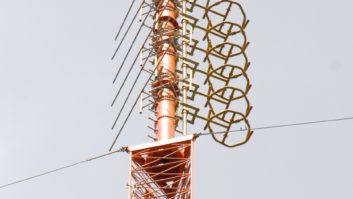A Change in Interference Protection Rules?
Dec 1, 2011 1:30 AM, by Lee Petro
Protection. In cars, it”s the dual-side curtain air bags. Riding a bicycle, it”s your helmet. On rollerblades, it”s the person in front of you when you inevitably fall. In broadcasting, the protection from interference afforded by the Federal Communications Commission largely depends on the type of broadcast service.
For example, in the non-reserved FM band, interference protection comes from the spacing requirements imposed on FM allotments. The Commission”s rules prescribe specific distances between FM allotments, based on the assumption that the facilities are operating at the maximum power and height permitted under the Commission”s rules. On the other hand, in the AM and noncommercial FM services, interference protection is only provided to the edge of the particular service contour. In the digital television service, the Commission uses a hybrid version, which allots new facilities using the same type of spacing requirements used in the FM service, but then permits minor changes to existing facilities based on rules similar to that in the AM, noncommercial FM, and FM translator services.
A recent petition for rulemaking filed with the Commission would change the interference protection rules for the non-reserved FM band to largely match the rules in the other services. SSR Communications, Inc., a broadcaster in Mississippi, proposed that the Commission abandon the spacing rules, and instead only provide interference protection based on a FM station”s actual contour. SSR argued that the current interference protection rules were established when the commercial FM service was still young, and the fact that FM stations have been in existence for more than 25 years eliminates the need for the belt-and-suspenders approach to interference protection. SSR also argued that the proposed change in rules would permit the modification of facilities that have found themselves foreclosed from the changing community of license by the recent Rural Radio proceeding.
Several parties filed supporting comments, agreeing with SSR that the rules should be changed. While the association of FCC engineers passed on taking a position on the rule changes at this point in the proceeding, some existing broadcasters, including the Mississippi Association of Broadcasters urged the Commission to proceed with the changes proposed by SSR.
On the other hand, the National Association of Broadcasters and a coalition of broadcasters, filed opposing comments. Its opposition centered mostly on two points, that the FM band would become too cluttered with the resultant lack of clean signals, and that the rule changes would foreclose flexibility for existing broadcasters when they needed to make minor changes.
With respect to the first point, the opposition noted that interference issues caused, in part, by the contour-protection methodology that SSR has proposed have plagued the AM band. The parties referenced the more-recent efforts taken by the Commission to impose greater protections in the AM service, and argued that the non-reserved band could suffer the same result.
– continued on page 2
A Change in Interference Protection Rules?
Dec 1, 2011 1:30 AM, by Lee Petro
Moreover, the parties noted that the adoption of the proposed rules could result in the inability of broadcasters to make future minor changes to their facilities. Since it is common for broadcasters to change their transmitter sites based on landlord disputes and zoning issues, the parties argued that the proposed changes could make future modification more difficult, perhaps forcing a station to reduce power if it was hemmed in by surrounding stations. Finally, the parties noted that the recent changes in the Rural Radio proceeding were meant to foreclose more movement of radio stations into the urban markets, and the proposed rules would likely encourage more changes of this sort.
The next step will be for the FCC to decide whether to proceed and issue a Notice of Proposed Rulemaking. Given the impact of the proposed rule changes, it is likely that there will be more activity in the next stage should the Commission proceed.
Dateline

Dec. 16, 2011: Stations in Georgia and Alabama continue running License Renewal Post-Filing Announcements on Dec. 16, 2011, and Jan. 1 and 16, Feb. 1 and 16, 2012.
Dec. 16, 2011: Stations located in Arkansas, Louisiana, and Mississippi continue running their pre-filing announcements on Dec. 16, Jan. 1 and 16, 2012.
Dec. 27, 2011: EAS participants must submit reports on the results of the first Nationwide EAS Test held on Nov. 9, 2011.
Feb. 1, 2012: Stations in Arkansas, Louisiana, and Mississippi file License Renewal Application and EEO Program Report. Noncommercial stations also file their Biennial Ownership Report (FCC 323-E).
Petro is of counsel at Drinker Biddle & Reath, LLP. Email: [email protected].
December 2011
Dec 1, 2011 6:00 AM
Backstage at A Prairie Home Companion, a look at Ethernet-based audio routing systems, details of MPLS networks, and Field Reports on the Orban Optimod-FM 8600 and Harris PR&E Netwave.












